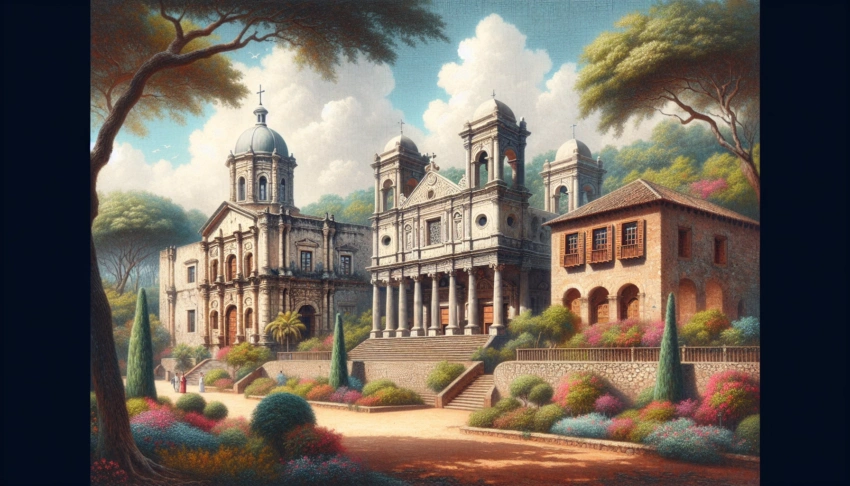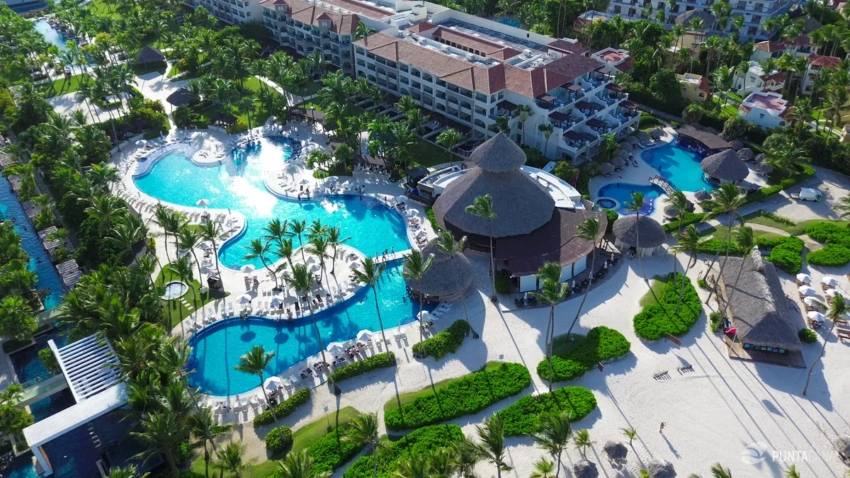History & Heritage: Top Museums, Colonial Sites, and Cultural Tours
Exploring America’s Top Museums

History & Heritage: Top Museums, Colonial Sites, and Cultural Tours
America’s museums are not just buildings filled with artifacts; they are vibrant portals into the nation’s soul, showcasing the rich tapestry of art, history, and science that has shaped the country. From the expansive collections of the Smithsonian Institution to the artistic treasures of the Metropolitan Museum of Art, and the poignant narratives of the National WWII Museum, these institutions offer a glimpse into the past and a bridge to the future.
1. The Smithsonian Institution: A National Treasure
With 19 museums and the National Zoo, the Smithsonian Institution is a veritable treasure trove of knowledge and culture. Founded in 1846, it is often referred to as the “Nation’s Attic,” housing over 154 million items that span the universe of human discovery. Whether you’re captivated by the Wright brothers’ first airplane or the dazzling Hope Diamond, the Smithsonian offers an unparalleled journey through time and space.
Each museum within the Smithsonian complex has its unique charm and focus. The National Air and Space Museum, for example, attracts millions of visitors each year with its awe-inspiring exhibits on aviation and space exploration. Meanwhile, the National Museum of American History brings to life the stories of the nation, from the revolutionary beginnings to modern-day innovations. The National Museum of African American History and Culture provides profound insights into the African American experience, offering exhibits that celebrate resilience and achievement.
Visiting the Smithsonian is like stepping into a world where every exhibit tells a story, and every artifact whispers secrets of the past. With free admission to most of its museums, it is a cultural experience accessible to everyone.
2. Metropolitan Museum of Art: A Global Collection
The Metropolitan Museum of Art, or “the Met” as it is affectionately known, is a beacon of artistic brilliance located in the heart of New York City. Housing over two million works of art spanning 5,000 years, it is one of the largest and most prestigious art museums in the world.
From ancient Egyptian artifacts to Renaissance masterpieces and modern installations, the Met’s collection is as diverse as it is comprehensive. Its European paintings gallery alone boasts works by Van Gogh, Rembrandt, and Vermeer, allowing visitors to immerse themselves in the great epochs of art history. The museum’s Costume Institute is a fashionista’s dream, famously hosting the annual Met Gala, where haute couture meets history.
The Met isn’t just about viewing art; it’s about experiencing it. With interactive exhibits, educational programs, and guided tours, visitors can delve deeper into the context and significance of the art on display. It’s a place where the world’s cultures converge, offering an enlightening and enriching experience to anyone who steps through its doors.
3. National WWII Museum: Stories of Valor and Sacrifice
Located in New Orleans, the National WWII Museum is a powerful tribute to the men and women who served during the Second World War. Through immersive exhibits and personal narratives, the museum provides a comprehensive look at the global conflict that reshaped the world.
The museum’s exhibits are designed to engage visitors in the stories of bravery and sacrifice. The “Road to Tokyo” exhibit, for instance, takes visitors through the strategic battles in the Pacific, while the “Road to Berlin” highlights the European theater of war. One of its most moving displays is the “Arsenal of Democracy,” which showcases the home front efforts that were crucial to the Allied victory.
What sets the National WWII Museum apart is its dedication to storytelling. First-person accounts, multimedia displays, and interactive experiences bring history to life, ensuring that the lessons of WWII are not forgotten. It’s a place where history is not just observed but felt, leaving a lasting impression on all who visit.
Unearthing Colonial Heritage Sites
Step into a time machine and travel back to America’s colonial era, where every corner holds tales of bravery, resilience, and the indomitable human spirit. These sites offer a window into the formative years of a nation, inviting you to walk the same paths as the pioneers who laid the foundation of modern America.

Aerial view of Punta Cana
1. Colonial Williamsburg: Living History Experience
Nestled in the heart of Virginia, Colonial Williamsburg isn’t just a historic site—it’s a total immersion in 18th-century life. As you wander through the cobblestone streets, you’ll feel the past come alive with costumed interpreters portraying everyday life, from blacksmiths to political figures. This living history museum is a vibrant tapestry of the colonial era, complete with reenactments that make you part of the story.
Don’t miss the Governor’s Palace, where you can imagine the weighty decisions that shaped the future of a fledgling America. The craftsmanship of the buildings and the authenticity of the experiences provide a vivid picture of early American life.
2. Jamestown Settlement: America’s First Permanent Colony
Just a stone’s throw from Williamsburg, the Jamestown Settlement tells the riveting story of America’s first permanent English colony. Founded in 1607, Jamestown was a bold experiment in new-world living, fraught with challenges and triumphs. The settlement features meticulously reconstructed fort and Powhatan Indian village, offering a glimpse into the lives of settlers and native peoples.
Through engaging exhibits and archaeological artifacts, you’ll learn about the interactions between the colonists and the indigenous Powhatan Confederacy. Whether you’re a history buff or a curious traveler, Jamestown offers valuable insights into the early days of America’s story.
3. Plymouth Plantation: Pilgrim’s Progress
Venture to Massachusetts and step into the shoes of the Pilgrims at Plymouth Plantation, where the iconic story of the Mayflower comes to life. This site is a re-creation of the Pilgrims’ original settlement, complete with timber-framed houses and costumed interpreters who never break character. It’s a chance to see history through the eyes of those who crossed an ocean to start anew.
The plantation also honors the Wampanoag people, who played a crucial role in the Pilgrims’ survival. Through interactive exhibits and cultural demonstrations, visitors gain a deeper understanding of the collaboration and conflict that marked this pivotal chapter in history.
Our Best Tours in Punta Cana
Why stop at history when you can add a splash of excitement to your journey? Our curated tours in Punta Cana offer a perfect blend of adventure and cultural exploration. From guided excursions to thrilling activities, there’s something for every traveler.

Saona Island Excursion - Caribbean Paradise
from $75 Read more
Swimming with Dolphins in Punta Cana - Top Adventure 2025 (50 minutes)
from $155 Read moreCultural Tours: Journey Through America’s Diverse Heritage
Embark on a cultural odyssey across the United States, where each trail and tour brings to life the vibrant tapestry of traditions, histories, and identities that have shaped the nation. Discover the heart of America’s diverse heritage and delve into the stories that form its rich cultural fabric.
1. African American History Tours: Tracing the Roots
Spanning centuries, the contributions of African Americans have been pivotal in shaping the cultural, social, and political landscape of the United States. These tours offer an in-depth exploration of significant landmarks, museums, and cultural centers that celebrate African American heritage.
In cities like Washington, D.C., the National Museum of African American History and Culture stands as a beacon of cultural preservation, offering exhibits that chronicle everything from the transatlantic slave trade to the Harlem Renaissance and beyond. Meanwhile, in Memphis, Tennessee, the National Civil Rights Museum provides a poignant look into the struggle for equality, located at the historic Lorraine Motel, the site of Dr. Martin Luther King Jr.’s assassination.
For those eager to walk the paths of history, the Selma to Montgomery National Historic Trail in Alabama immerses visitors in the pivotal civil rights marches of 1965. These tours provide not just a walk through history, but a journey into the resilience and spirit of a community that continues to thrive and influence.
2. Native American Heritage Trails: Tradition and Spirit
The legacy of Native American tribes is woven into the very landscape of America. Through guided tours and cultural centers, visitors can gain a profound understanding of the traditions, beliefs, and histories of the native peoples who have called this land home for millennia.
The Trail of Tears National Historic Trail offers a somber reflection on the forced relocation of Native American tribes, while providing insight into their enduring spirit and cultural resilience. Visitors can also explore the rich traditions and sacred sites of the Navajo Nation in Arizona, where the stunning landscapes of Monument Valley serve as a backdrop for learning about the Navajo way of life.
Additionally, the Cherokee Heritage Center in Oklahoma provides a comprehensive look at Cherokee history and culture, allowing visitors to engage with interactive exhibits and traditional Cherokee art and crafts. These tours are a testament to the enduring spirit and vibrant culture of Native American tribes, inviting visitors to learn and appreciate their significant contributions to America’s story.
3. Immigrant Stories: Melting Pot Tours
America’s identity as a melting pot is brought to life through tours that celebrate the diverse immigrant narratives that have contributed to the nation’s growth and cultural richness. These tours reveal the myriad of stories behind America’s immigrant communities and their lasting impact on the country’s cultural tapestry.
In New York City, the Tenement Museum offers a glimpse into the lives of immigrant families who settled in the Lower East Side during the late 19th and early 20th centuries. The museum’s restored apartments and immersive tours provide an intimate look at the challenges and triumphs of these early settlers.
Meanwhile, in San Francisco, the Angel Island Immigration Station, often referred to as the “Ellis Island of the West,” explores the stories of Asian immigrants who arrived on the Pacific shores. The station’s exhibits highlight the struggles and perseverance of these communities in the face of adversity.
These cultural tours not only enrich our understanding of America’s diverse heritage but also inspire a deeper appreciation for the myriad traditions and histories that continue to shape the nation’s identity. Embark on these journeys to celebrate the resilience, creativity, and spirit of the many cultures that call America home.
Hidden Gems: Lesser-Known Historical Sites
Unveiling the hidden gems of America’s historical landscape is like opening a treasure chest buried deep within the heart of the nation. These lesser-known sites tell stories long forgotten, offering a fresh perspective on the past and enriching our understanding of the present.

Punta Cana
1. Historic New Orleans: Beyond the French Quarter
Step into the vibrant tapestry of New Orleans, where history is woven into the very fabric of the city. While the French Quarter often steals the spotlight, there’s a world of historical intrigue that lies beyond its bustling streets. Venture into neighborhoods like Tremé, one of the oldest African American neighborhoods in the United States. Here, you’ll find the Louis Armstrong Park, dedicated to the jazz legend and the indomitable spirit of the city’s musical heritage.
Another hidden gem is the New Orleans Pharmacy Museum, which showcases the evolution of medical practices in the 19th century. Once the apothecary of the first licensed pharmacist in America, this museum is a testament to the quirky and sometimes bizarre practices of early medicine.
2. Cahokia Mounds: Ancient Urban Center
Just across the Mississippi River from St. Louis, you’ll find Cahokia Mounds, a site that predates European settlement by centuries. This ancient urban center was once home to a thriving civilization, with a population rivaling that of Paris or London around the year 1250. Today, it stands as a UNESCO World Heritage Site, offering a glimpse into the sophisticated society of the Mississippian people.
Visitors can explore the expansive grounds, which include 80 mounds over 2,200 acres. The Monk’s Mound is the largest prehistoric earthwork in the Americas and provides stunning views of the surrounding landscape. The site’s interpretive center features exhibits that delve into the daily life, culture, and eventual decline of the Cahokia civilization, providing a fascinating look at pre-Columbian history.
3. Lowell National Historical Park: Industrial Revolution Insights
In the heart of Massachusetts, Lowell National Historical Park offers a unique window into America’s industrial past. Once a booming textile manufacturing hub, Lowell played a pivotal role in the Industrial Revolution. Today, visitors can walk through preserved factory buildings and hear the stories of the “Mill Girls” who worked long hours under challenging conditions.
The park offers interactive exhibits that bring the past to life, including the Boott Cotton Mills Museum, where you can see historic machinery in action. Walking along the canals that powered the mills, you can almost hear the echo of the looms and the hustle of the factory floor. It’s a vivid reminder of the ingenuity and determination that fueled America’s growth into an industrial powerhouse.
Our Best Tours in Punta Cana
For those eager to blend their love of history with a tropical escape, our tours in Punta Cana offer the perfect opportunity to explore the region’s cultural and historical highlights. Whether you’re interested in colonial history or the vibrant traditions of local communities, these excursions promise unforgettable experiences.

Punta Cana Private Boat Trip at the Best Price - 3-Hour Exclusive Tour with Snorkeling (from Jellyfish to Cabeza de Toro)
from $590 Read more
Power Cruise – Punta Cana Party Experience on the Bad Girl Catamaran
from $65 Read moreThese hidden gems are more than just relics of the past; they’re gateways to understanding the diverse narratives that have shaped America. As you wander through these sites, let the whispers of history guide you to a deeper appreciation of the nation’s complex heritage.
Preserving Heritage: The Role of Museums and Sites
Preserving our cultural heritage is not just about protecting history; it’s about ensuring that the stories, lessons, and legacies of the past remain alive for future generations to learn from and enjoy. In a world that’s rapidly transforming, maintaining a connection to our roots becomes ever more crucial.
1. Conservation Efforts: Protecting the Past
When it comes to safeguarding our treasured historical sites and artifacts, conservation efforts play a pivotal role. These efforts are akin to a gentle embrace—carefully preserving the past while allowing it to speak to the present and future. Modern conservation employs a mix of innovative technology and traditional techniques. For instance, laser cleaning allows for the precise removal of dirt and pollutants from ancient sculptures without damaging the underlying material. Meanwhile, climate-controlled environments ensure that delicate artworks and manuscripts are preserved under optimal conditions.
Conservation Techniques and Their Applications
| Technique | Application | Example |
|---|---|---|
| Laser Cleaning | Removal of surface contaminants | Used on marble statues |
| Climate Control | Maintaining stable temperature and humidity | Preservation of rare manuscripts |
| Digital Restoration | Reconstructing damaged artworks | Digitally restoring faded paintings |
| Biological Treatments | Preventing biological decay | Applying anti-fungal solutions to artifacts |
Yet, conservation is not a solitary endeavor. It often involves collaborations with scientists, historians, and artisans. Together, they work tirelessly to ensure that the physical integrity and cultural significance of heritage sites are maintained.
2. Educational Programs: Engaging the Public
Museums and historical sites have long recognized the power of education in sustaining public interest and understanding of cultural heritage. Through dynamic educational programs, they ignite curiosity and foster a deeper appreciation for history. From interactive workshops to immersive virtual reality experiences, these programs cater to diverse audiences, making learning both accessible and enjoyable.
Many institutions now offer tailored educational tours for school groups, providing students with a hands-on learning experience that textbooks alone cannot offer. Additionally, adult learning sessions and lecture series delve into deeper historical contexts, allowing enthusiasts to broaden their knowledge. Moreover, online platforms have expanded the reach of these educational initiatives, enabling global audiences to engage with heritage from the comfort of their homes.
3. Community Involvement: A Collective Responsibility
Cultural preservation is a collective responsibility that extends beyond the walls of museums. Community involvement is crucial in fostering a sense of ownership and pride in local heritage. This involvement ranges from volunteering at local sites to participating in archaeological digs and fundraising for preservation efforts.
Many communities have embraced the idea of heritage tourism, where local residents act as ambassadors, sharing their unique stories and insights with visitors. This not only boosts local economies but also ensures that the narratives and traditions of the area are passed down through generations. By engaging with heritage in this way, communities create a living tapestry of history that continues to evolve and thrive.
Ultimately, preserving heritage is about more than just maintaining buildings and objects; it’s about nurturing the cultural tapestry that defines us as individuals and as a society. By supporting conservation efforts, participating in educational programs, and involving communities, we ensure that the wealth of our history remains vibrant and accessible for all.
Frequently Asked Questions
What are some of the top museums to visit for history and heritage in the United States?
Some of the top museums for history and heritage in the United States include the Smithsonian National Museum of American History in Washington, D.C., the American Museum of Natural History in New York City, and the Getty Center in Los Angeles. These museums offer extensive collections that cover a wide range of historical and cultural topics.
Which colonial sites in the United States are a must-see for history enthusiasts?
For history enthusiasts, must-see colonial sites include Colonial Williamsburg in Virginia, Jamestown Settlement, and Plymouth Plantation in Massachusetts. These sites provide immersive experiences that bring the colonial era to life.
What should I expect during a cultural tour of historical sites?
During a cultural tour of historical sites, you can expect guided tours, interactive exhibits, and educational programs that delve into the history and heritage of the site. Tours often include knowledgeable guides who provide insights and answer questions about the site’s significance.
Are there any tips for visiting historical museums with children?
When visiting historical museums with children, look for interactive exhibits and family-friendly activities. Check if the museum offers guided tours specifically designed for children or educational programs. It’s also a good idea to prepare them by discussing what they will see and why it’s important.
How can I find cultural tours that focus on underrepresented histories?
To find cultural tours focusing on underrepresented histories, research local historical societies, community organizations, and specialized tour operators. These groups often offer unique tours that highlight diverse perspectives and lesser-known historical narratives.
What is the importance of visiting colonial sites and museums for cultural understanding?
Visiting colonial sites and museums is important for cultural understanding as it provides insights into the past, helping us understand how historical events and cultural interactions shaped the present. These visits foster empathy and a greater appreciation for diverse cultural heritage.
Are there any accessible options for people with disabilities at these historical sites and museums?
Many historical sites and museums offer accessible options for people with disabilities, such as wheelchair access, audio guides, and tactile exhibits. It’s recommended to check the specific site or museum’s website before visiting to ensure they meet your accessibility needs.
Is there a best time of year to visit historical museums and colonial sites?
The best time to visit historical museums and colonial sites is often during the spring and fall, when the weather is mild and crowds are smaller. However, it’s important to check for any special events or seasonal programs that might enhance your visit.
Can I take photos during my visit to museums and historical sites?
Photography policies vary at different museums and historical sites. While some allow photography for personal use, others may restrict it to protect exhibits. It’s best to check the specific site’s photography policy before your visit.
